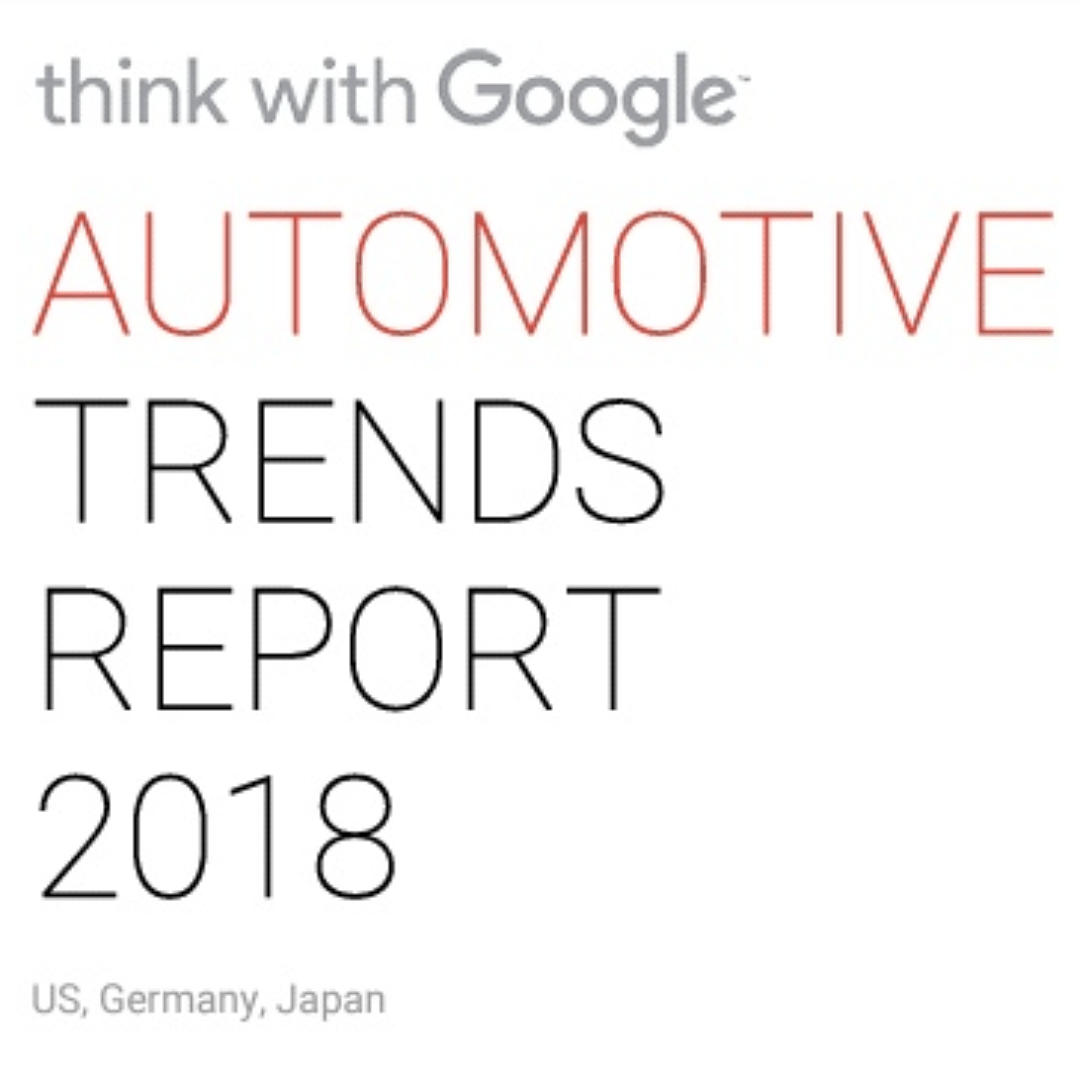
With every query typed into a search bar, users provide a glimpse into their considerations and intentions. By compiling top searches, we’re able to render a strong representation of the population and gain insight into their behavior. In this Google Auto Trends Report, we are excited to use Google data to identify and compare in-vehicle trends across three different markets: US, Germany, and Japan.
The goal of this report is to help auto marketers, researchers and manufacturers better understand what’s top of mind for consumers when it comes to driving. We are proud to share this iteration and look forward to hearing back from you.
– Olivier Zimmer & Yarden Horwitz
Trendspotting Project Leads, Google
OUR FOCUS
The auto industry is undergoing major shifts: adapting to electrification, the rise of mobility services, and a future driven by automation. But with such a focus on tomorrow, what are the opportunities that OEMs might be missing today? This report brings a consumer lens to help answer that question. Using Google Search data, we explore what technology and accessories consumers are currently interested in bringing into their vehicles.
With it, we hope to unlock new opportunities for OEMs to meet driver needs, wants, and desires that exist right now.
How are consumers looking to enhance their driving experience?
TO TACKLE THIS QUESTION… We identified the biggest search trends, by pulling top volume queries related to the automotive category and looking at their monthly volume from September 2015 to August 2017. We categorized these trends, by removing any seasonal effect and then measuring the year-over-year growth, velocity, and acceleration for each search query. Based on these metrics, we were able to classify the queries into similar trend patterns. We then curated the most significant trends to illustrate interesting shifts in behavior. We went deeper. With every report, we strive to advance our methodologies to better understand category trends and what’s driving them. For this report, we looked beyond Google Search to YouTube data. We analyzed the language within top related videos to uncover how trends are talked about, and the implications for brands. We also stepped away from the data and spoke to over 1,000 consumers across the three markets to better understand how the trends manifest in people’s lives.
US SPOTLIGHT PUTTING PETS FIRST
When it comes to in-vehicle-related search trends, Americans are putting their pets first. Dog- and pet-related rising search queries are particularly prominent across the top trending lists in the US when compared to the other two markets. Pets are like family now and people’s search interest reflects that. What opportunities does that unlock for OEMS to better design for a broader definition of family, one that puts pets in the passenger seat?
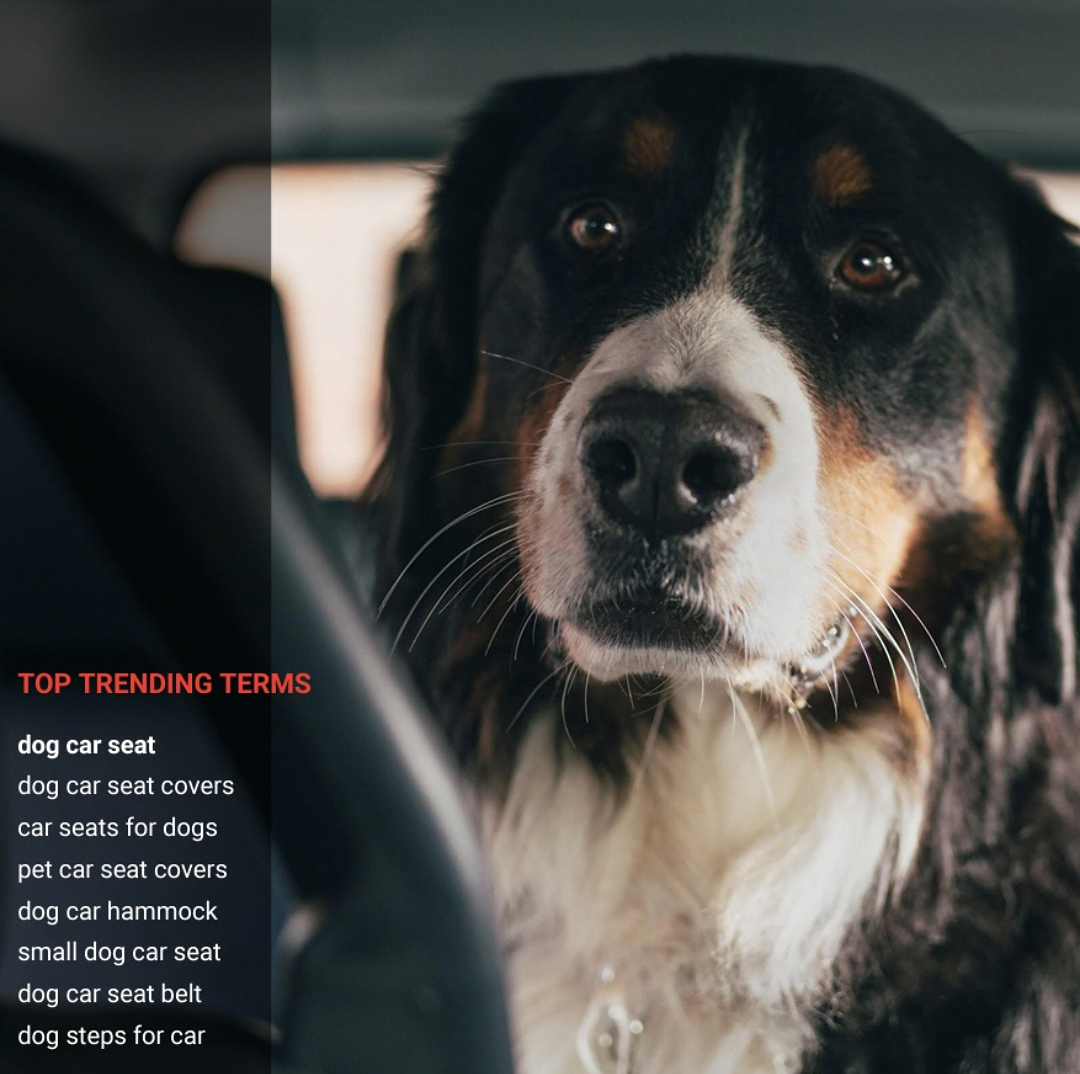
While consumers in Germany and Japan are also searching for pet-related vehicle equipment and accessories, the average American was 36X as likely to search than the average person in Germany and 10X as likely than the average person in Japan.
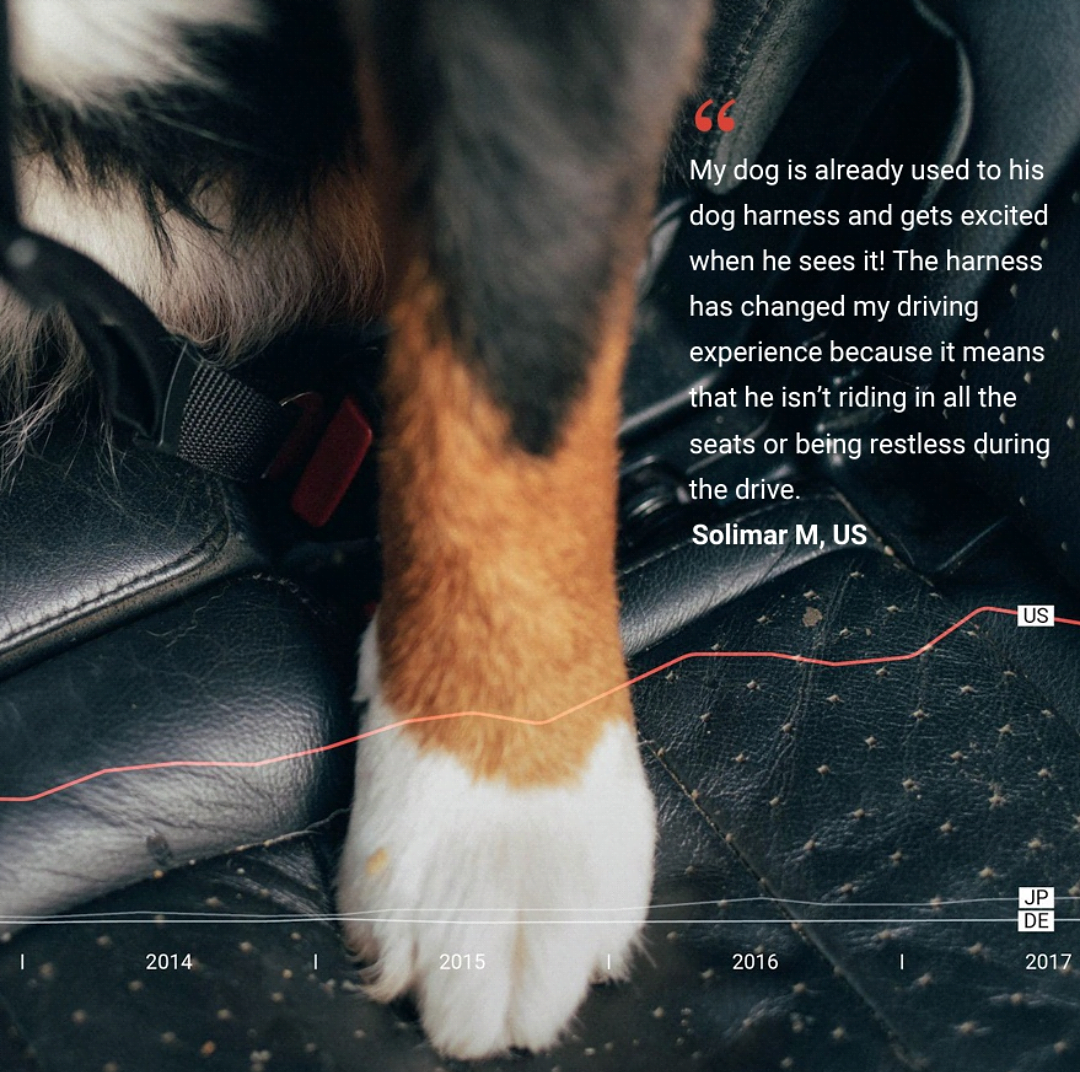
GERMANY SPOTLIGHT TRANSITIONING TO DIGITAL
In Germany, DAB, or Digital Audio Broadcasting, is a top trending search term. Interest is likely driven by a country-wide initiative launched in 2010 to convert all radio and television services to digital in the coming years. With DAB being top of mind for consumers right now, how might auto manufacturers activate around this interest (e.g., highlight DAB technology in your vehicle and the benefits of it)?
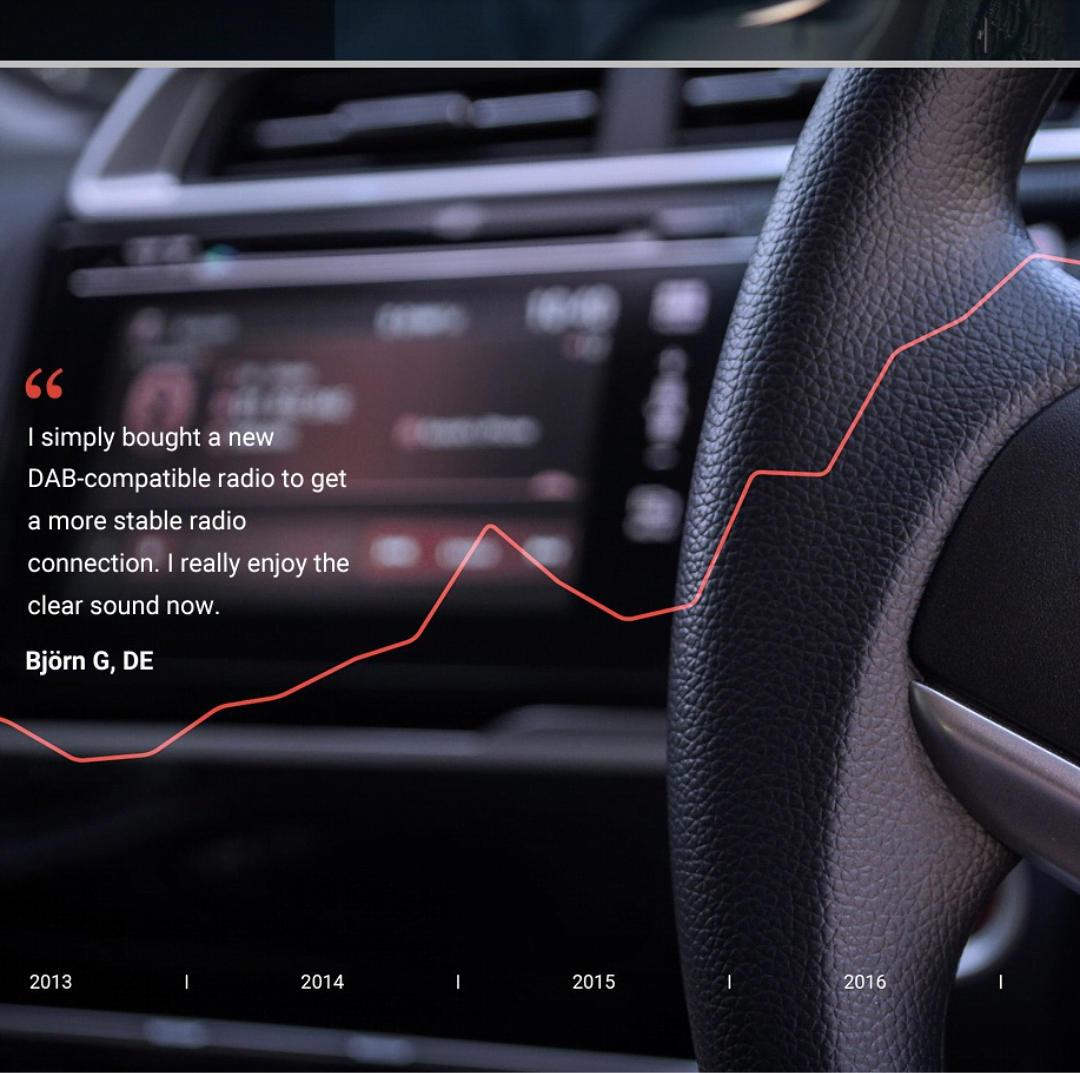
Even though the country-wide initiative launched in 2010, the DAB search trend is experiencing sustained year-over-year growth at a rate of 41% in Germany.
JAPAN SPOTLIGHT A HOME AWAY FROM HOME
Top rising searches in Japan indicate a consumer desire to customize car interiors for comfort and aesthetics. From seat covers and car curtains to fridges and humidifiers, we see that consumers in Japan are turning their cars into little homes away from home. What opportunities are there for auto manufacturers to consider the car as not just a vehicle for driving but as an extension of one’s home?
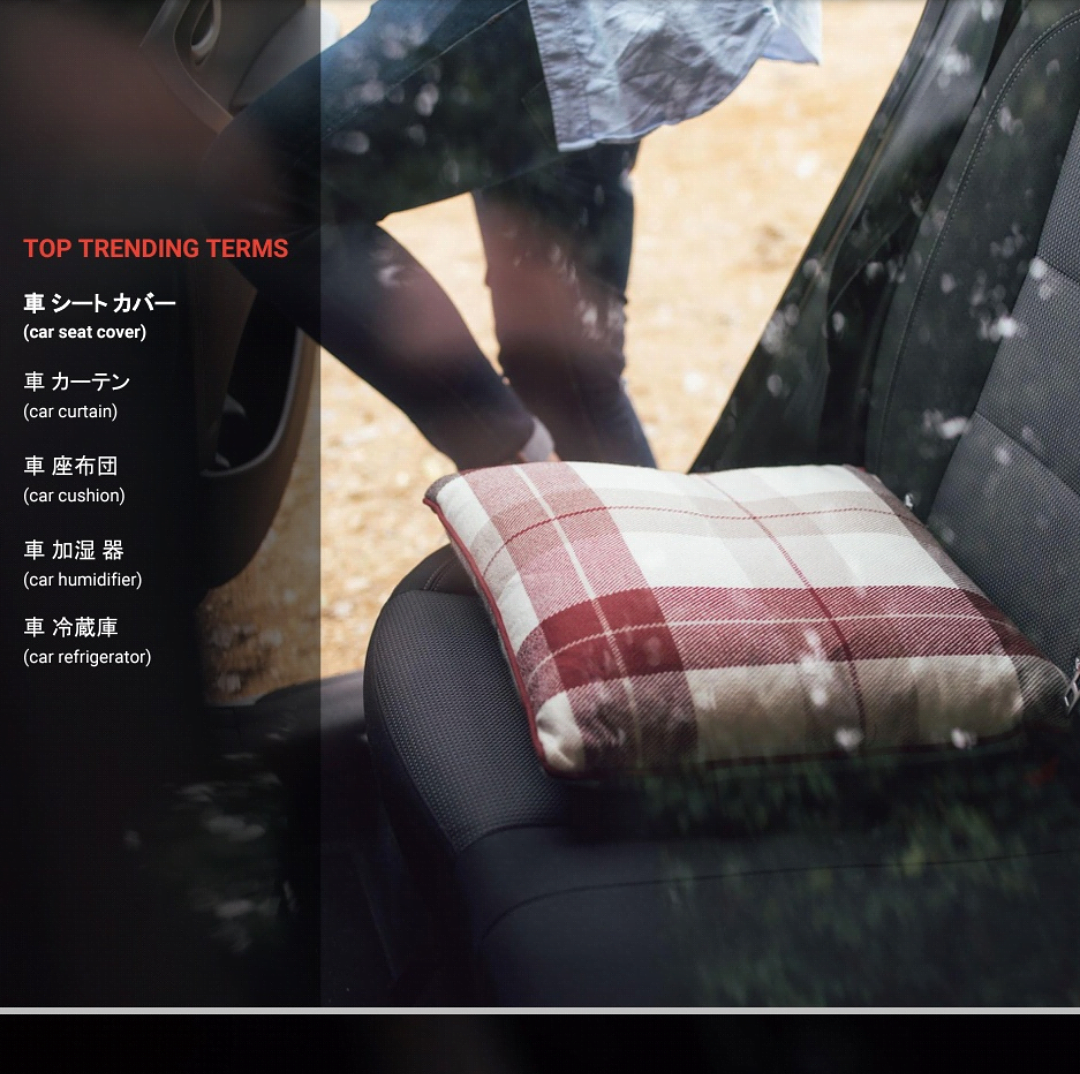 The average person in Japan is almost 2X as likely to search for customization than the average person in the US, and almost 5X times as likely than the average person in Germany.
The average person in Japan is almost 2X as likely to search for customization than the average person in the US, and almost 5X times as likely than the average person in Germany.
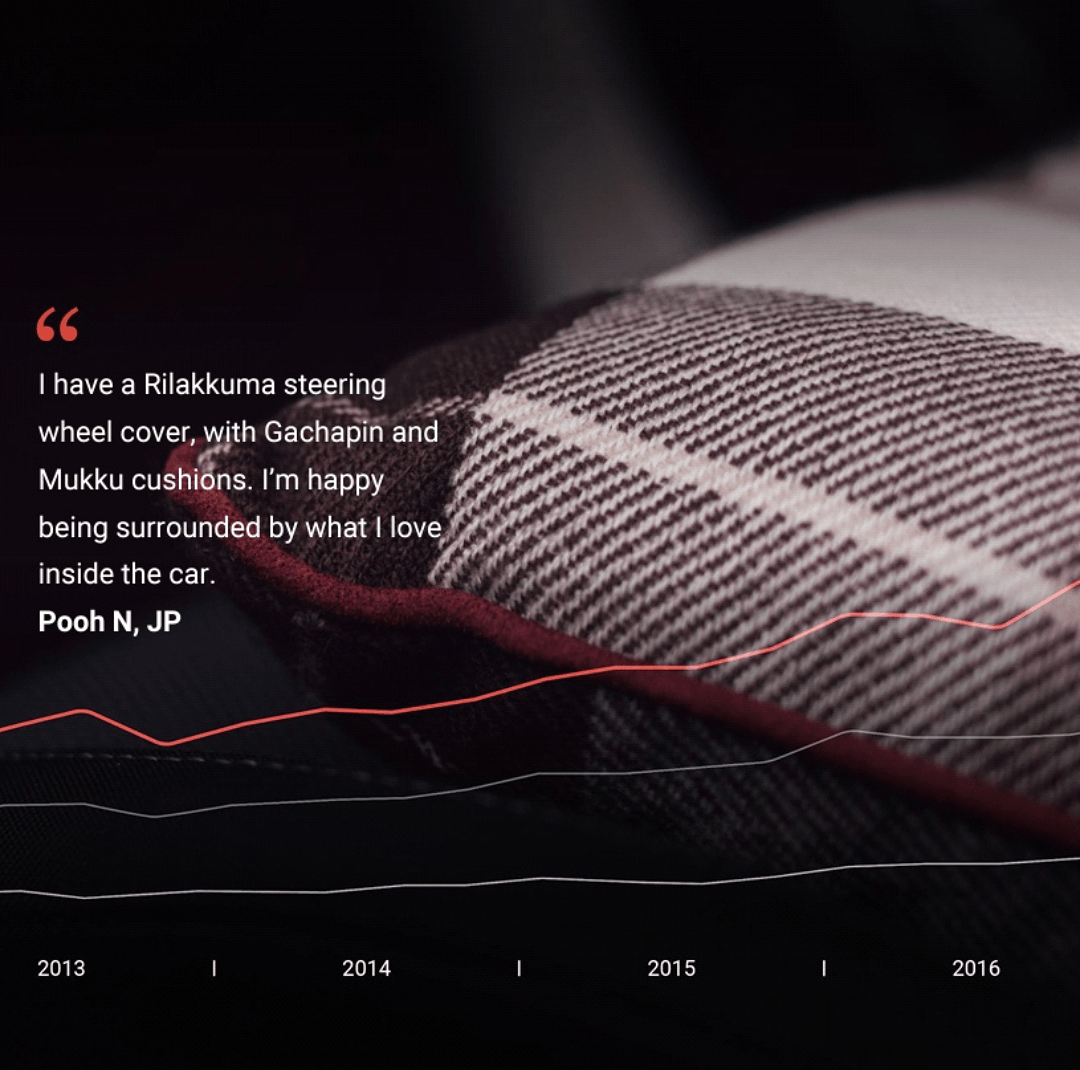
KEY TAKEAWAYS FROM MARKET SPOTLIGHTS
While the biggest trends in each market vary, one thing is the same across all markets: larger cultural shifts happening outside of the car are influencing what people are searching for when it comes to enhancing their driving experience.
– Americans are re-defining “family.” Consumers in the US are bringing their pets along for the ride, and prioritizing the needs of their new passengers.
– DAB (Digital Audio Broadcasting) is top of mind for German consumers right now, following a 2010 country-wide initiative to convert all radio and TV signals to digital.
– In Japan, consumers are seeking to recreate homey comfort and style for their in-vehicle experiences.
A CULTURAL DESIRE TO RECORD HAS COME TO AUTO
As cameras have an increasing presence in our day-to-day lives, we see our cultural desire to record and capture take roots in the auto industry. We’ve discovered that the biggest in-vehicle search trend across all three markets is onboard (in-car) cameras. While many vehicles currently feature backup cameras, the following section demonstrates that consumers are looking for different types of onboard cameras to meet additional needs, presenting opportunities for manufacturers to think about how to integrate new styles of onboard cameras directly into vehicle design.
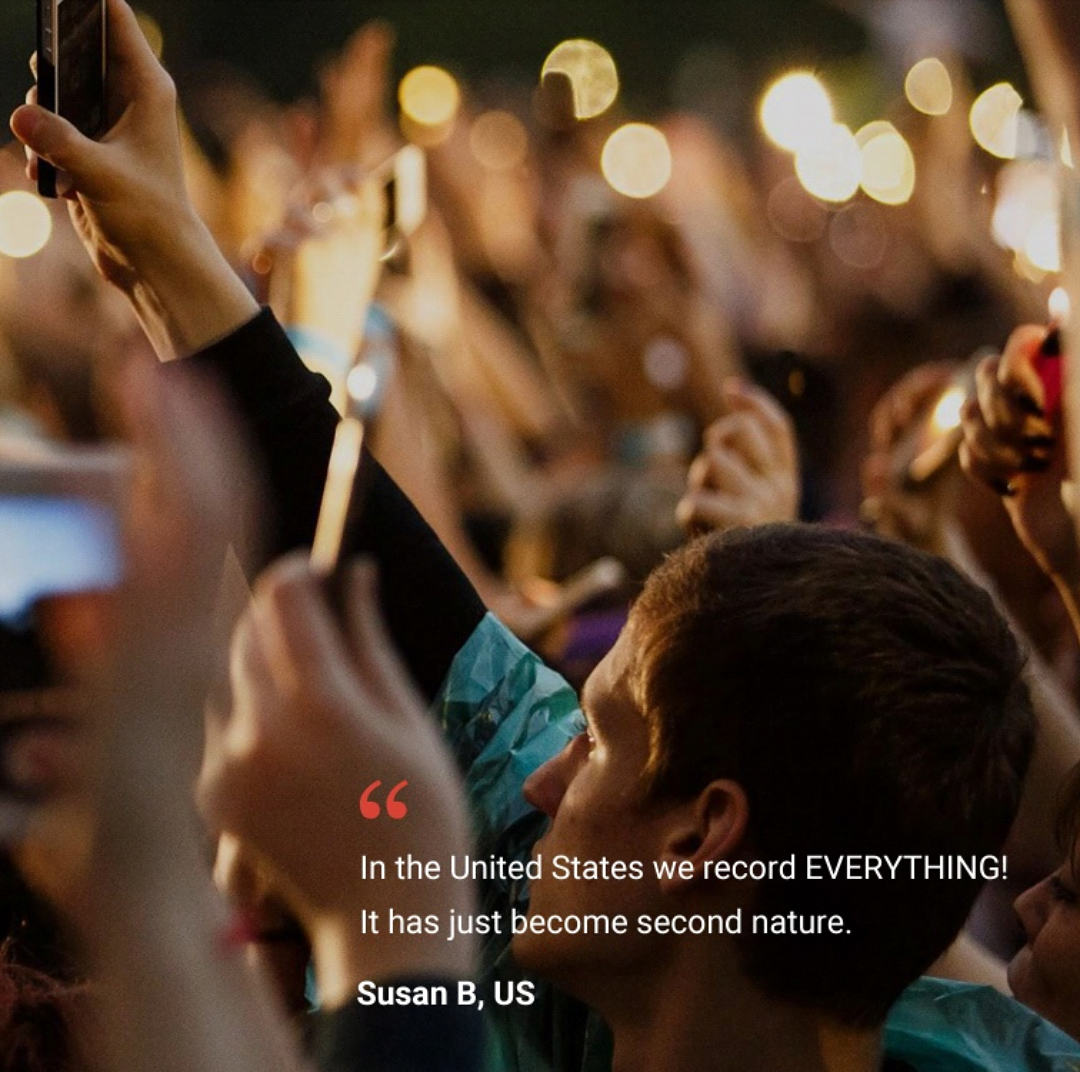
THE ONBOARD CAMERA IS A HUGE CONSUMER-LED TREND
Among the top in-vehicle-related searches, onboard cameras are trending across all three markets. In fact, search volume for onboard cameras is 3X as large as search volume for autonomous driving. Consumer search interest around onboard cameras reveals near-term opportunities for OEMs to consider, from product innovation to marketing communications.
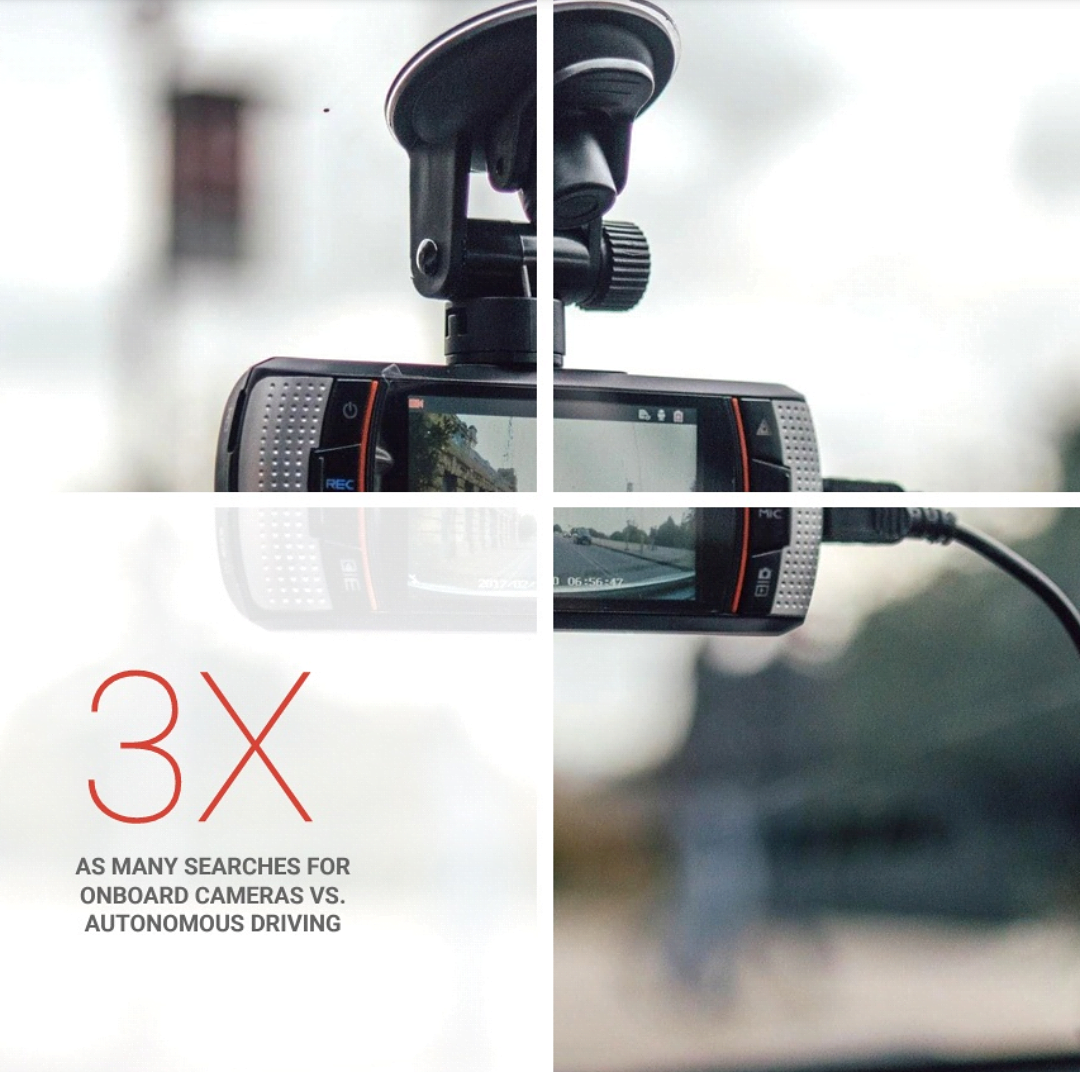
CONSUMERS ARE SEARCHING FOR ALL KINDS OF ONBOARD CAMERAS
The variety of language consumers use to describe the same products (i.e., dash cam, dash camera, car security camera) demonstrates that the onboard camera category is just in its early stages, with terminology not yet fully established. That said, we see that there are already a variety of products on the market that cater to different consumer needs. There is an opportunity to own the language around onboard cameras. How might an auto manufacturer establish its brand within the lexicon of onboard camera terminology?
CONSUMER INTEREST IS TAKING OFF
While footage of events such as the 2013 Chelyabinsk meteor kickstarted interest in onboard cameras, seasonal peaks around the holiday period from 2015 onwards indicate that search data is being driven by consumer purchase intent. Today, we see the most sustained growth related to onboard camera interest coming from Japan with 23% year-over-year growth. Interest in the US and Germany are also on the rise and have accelerated in the last three months – growing at 35% and 25%, respectively. This increase in interest demonstrates that demand across all three markets is here to stay.
AND HERE’S WHERE IT’S GOING
Beyond “dash cams” and “backup cams,” we’re seeing consumer appetite for new types of onboard cameras that meet different needs. This demonstrates that the onboard camera trend will continue to evolve and embed itself into the driving experience.
1. Capturing every angle.
CONSUMERS WANT US DE JP ONBOARD CAMERAS THAT RECORD MORE THAN THE ROAD AHEAD
Drivers want to make sure that all angles, inside and outside of the vehicle, are being captured. Search interest for all direction cameras are growing around ~100% year-over-year across the three markets. How might auto manufacturers extend driver vision even further, and make blind spots a thing of the past?
2. Seamless integration.
CONSUMERS WANT SLEEK, INTEGRATED ONBOARD CAMERA SOLUTIONS
Searches for “mirror” and “hidden” onboard cameras are gaining strong traction in the US and Japan, indicating that consumers in these markets want more unobtrusive camera options. While the trend is sustained at a growth rate of 28% year-over-year in Japan, interest across all types of discrete onboard cameras is growing at a rate of 303% year-over-year in the US. How else can auto manufacturers integrate onboard cameras and monitors in a more seamless way?
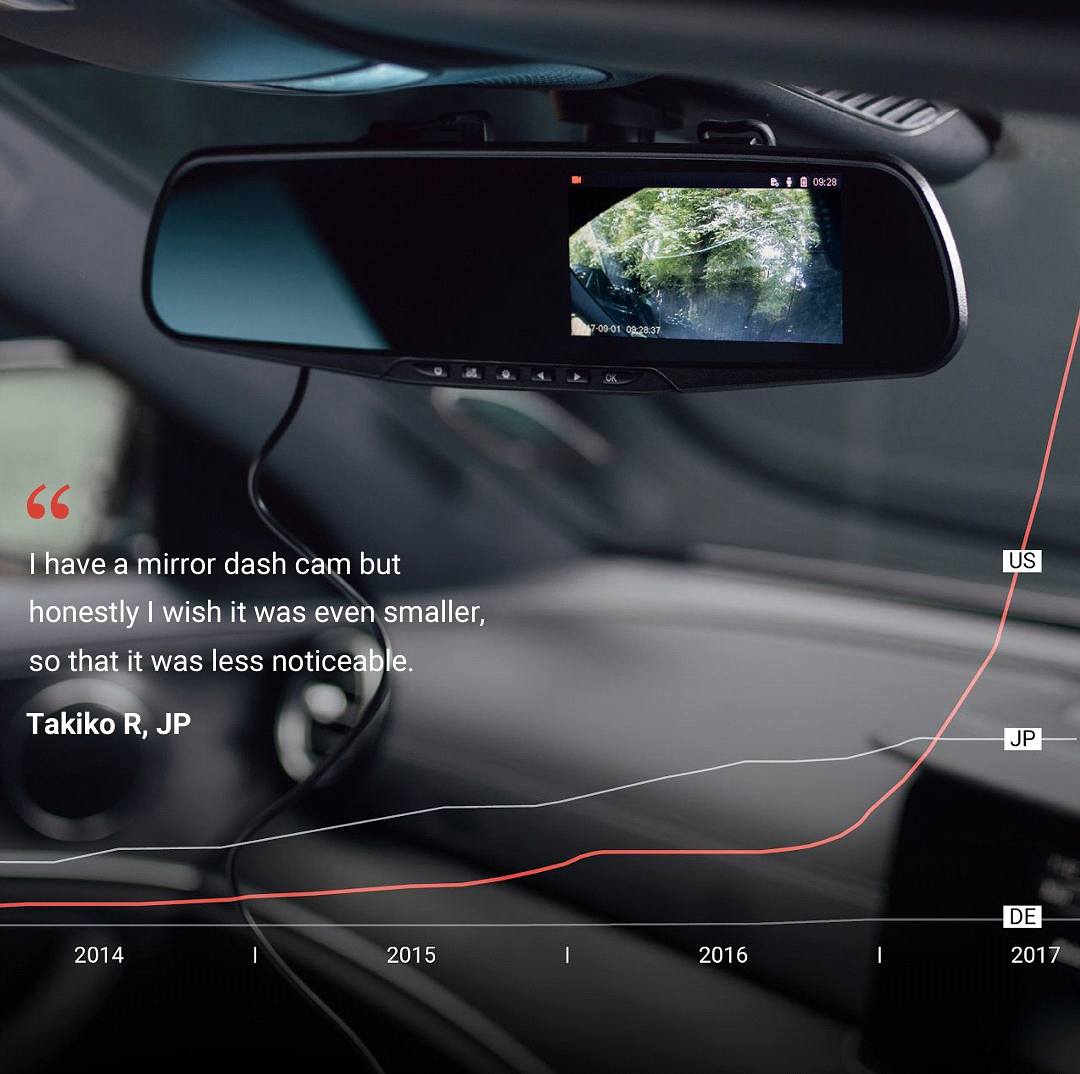
3. Enhanced features.
CONSUMERS WANT ONBOARD US DE JP CAMERAS TO BE SMARTER, BETTER, AND TO DO MORE FOR THEM
Specifically, they are looking for cameras that are HD and also offer advanced features such as GPS, night vision, and motion activation. GPS is the most in-demand feature in Germany and Japan, growing at a sustained year-over-year rate of 25% and 34%, respectively. Cameras unlocked new technical capabilities for smartphones – how might they do the same for the vehicle? What are other ways that auto manufacturers might enhance the driving experience through the platform of an onboard camera?
WHY DO CONSUMERS CARE ABOUT ONBOARD CAMERAS?
Using Google data, as well as qualitative and cultural investigation for added context, we uncovered two reasons why consumers are so interested in onboard cameras.
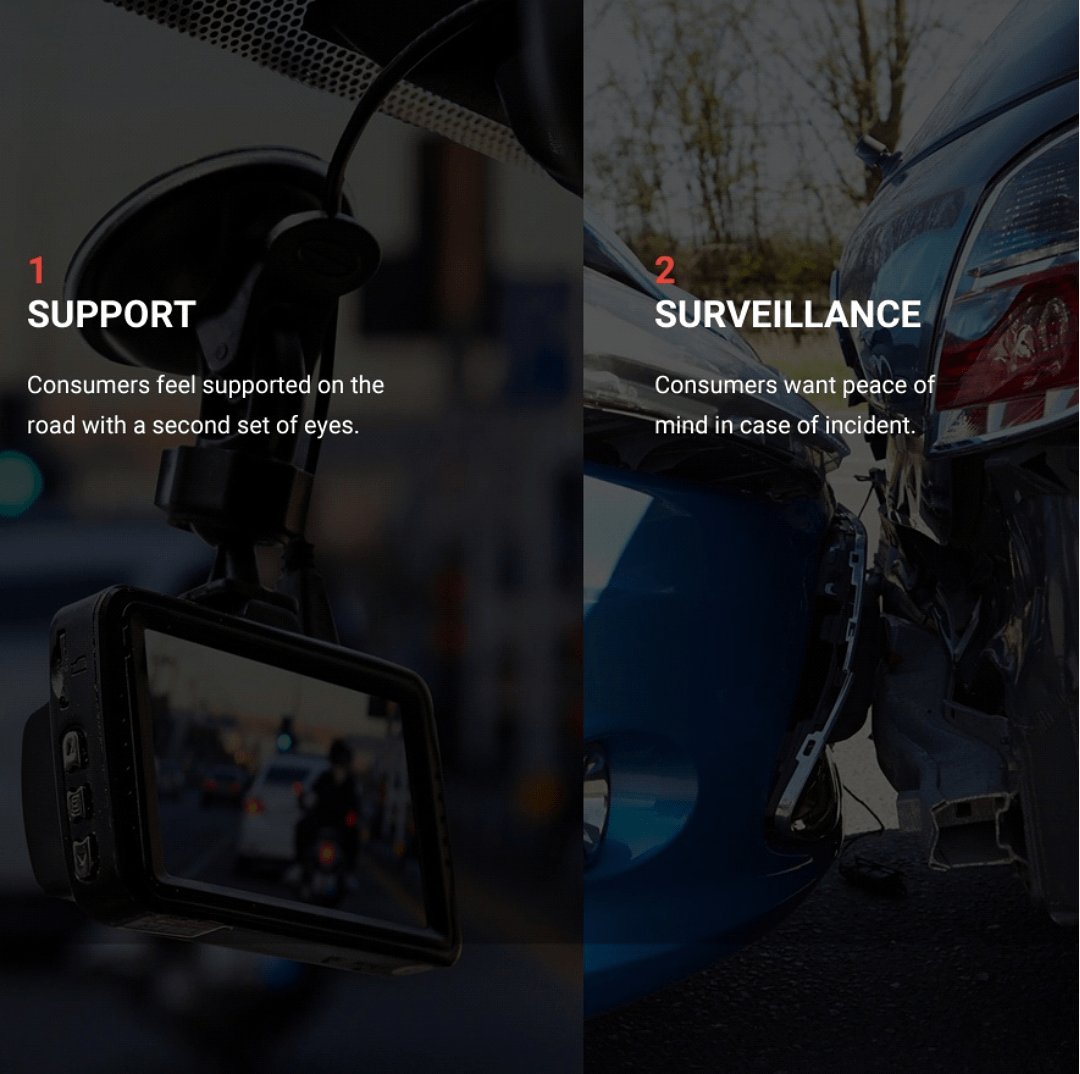
1. Support
CONSUMERS WANT A SECOND PAIR OF EYES WHILE ON THE ROAD
Consumers are using onboard cameras for driving assistance and support. Interest in backup cameras continues to grow at 22% year-over-year. As seen earlier, consumers are looking for cameras that cover all angles – they want to get rid of blind spots. Camera capabilities enable consumers to drive safer and smarter. How else can extended vision enable consumers to drive more confidently?
2. Surveillance
CONSUMERS WANT PEACE OF MIND IN CASE OF INCIDENT
Just as consumers use security cameras to protect their homes, consumers across all three markets are demonstrating strong intent to use onboard cameras for security and surveillance of their cars. What this tells us is that the car alarm is no longer enough – consumers are bolstering surveillance with onboard cameras, to monitor their cars from afar and capture evidence. How might auto manufacturers continue to evolve security systems and services for vehicles to enhance driver peace of mind?
Contributors to this report:
Kana Yoshii Automotive Account Manager (JP)
Yarden Horwitz Trendspotting Project Lead
Olivier Zimmer Trendspotting Project Lead
Joonsu Yang Trendspotting Analyst
Manuel Kekeisen Automotive Account Manager (DE)
Danny Brown Head of Analytics, Global Clients & Agencies, Google
Ali Pulver Human Truths Strategist, Google
Thomas Chi Global Analytical Lead, Google
Ed Westberg Data Scientist, Google
Colm O’Grada Data Scientist, Google






